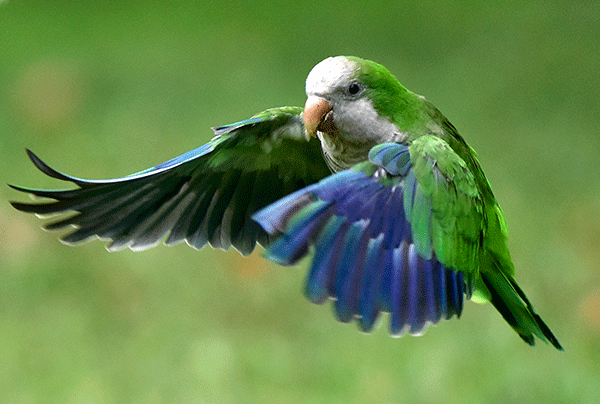Pets or pests? Quaker parrots invade Madrid
They may be cute, colorful and chatty, but South American quaker parrots have taken up residence in Madrid and other Spanish cities, irritating residents with their shrill squawks and destabilising the ecosystem.
The small, bright green and grey-breasted birds - also known as monk parakeets - first arrived in Spain in cages as entertaining pets, but some either escaped or were let loose, getting their first taste of freedom in the green, leafy Spanish capital - and then proliferating.
Maria Moreno, who lives in the Los Carmenes district in southwestern Madrid, said she first noticed them several years ago.
A pair of parrots chose the area as their home, and enjoyed it so much that there are now a dozen parakeets who fight among themselves and compete for food with pigeons, sparrows and magpies.
"The noise and mess they make is awful," she says, adding "and they urinate on cars," as she watches the parrots fly to and from trees along her road.
Some districts of Madrid, as well as parks such as Casa de Campo or the Retiro, are full of the birds which originate from Argentina, Brazil, Paraguay, Uruguay and Bolivia.
They build communal nests that weigh up to 50 kilograms, mostly in trees - they favor cedars - but also in electric pylons.
In order to do so, the parrots tear thousands of branches off trees, at times leaving them nearly bare.
"It causes a significant deterioration in the health of the tree, and some dry up," says Blas Molina, an expert at the Spanish Ornithological Society.
According to research by the society, there were around 20,000 quaker parrots - called so for their bobbing and shaking - in Spain last year, many of them in Madrid, Barcelona and Malaga on the southeast coast.
Other European countries such as the United Kingdom have also seen an influx of monk parakeets.
Paris, Rome and London meanwhile have large colonies of ring-necked parakeets, which come from Asia and Africa and are also deemed aggressive towards other birds.
Jose Luis Postigo, a researcher at the University of Malaga and an expert on quaker parrots, about which he is writing a thesis, says the species is "very adaptable".
It can live in a warm country like Spain, as well as in the colder climes of Brussels or Chicago, adapting by building thicker nest walls.
Classified as an invasive species, Spanish authorities are allowed to take measures to cull them, and in 2011 sales of the bird were banned in the country.
|
 A monk parakeet (myiopsitta monachus) also known as the quaker parrot flies in Atena park, Madrid.Agence France-Presse |


















